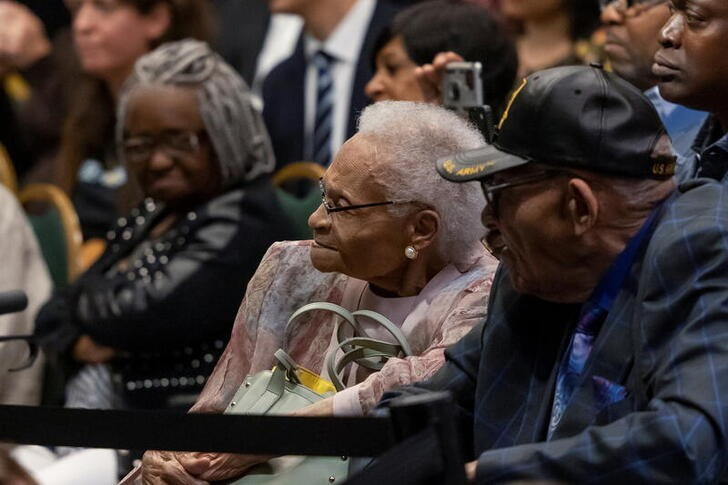(Reuters) – The last three known living survivors of the 1921 Tulsa massacre yesterday decried a judge’s dismissal of a lawsuit seeking reparations for the racist violence in Oklahoma.
In a statement read by their lawyer at a news conference in Tulsa, the three, each over 100 years old, said Tulsa County District Court Judge Caroline Wall had “condemned” them to languish on Oklahoma’s appellate docket with her brief order late on Friday tossing out their case.
“But we will not go quietly,” they said. “We will continue to fight until our last breath.”
The three are Lessie Benningfield Randle, 108, who is named as a plaintiff in the lawsuit; Viola Fletcher, 109; and Hughes Van Ellis, 102.
Damario Solomon-Simmons, their lead attorney and founder of the Justice for Greenwood Foundation, said at a Monday news conference in which he read the statement that he had not seen any document laying out Wall’s reasoning for her dismissal, the basis of which was not made clear in her brief order posted on the court website. He called the dismissal a “hurtful blow to our quest for justice” and asked the federal government to open an investigation into the massacre.
The lawsuit against the City of Tulsa seeks financial and other reparations, including a 99-year tax holiday for Tulsa residents who are descendants of victims of the massacre in the north Tulsa neighborhood of Greenwood.
Also named in the lawsuit are five government entities and Tulsa County’s sheriff in his official capacity.
It is estimated that as many as 300 people, most of them Black, died in the massacre.
The violence erupted after a white woman told police that a Black man had grabbed her arm in an elevator in a downtown Tulsa commercial building on May 30, 1921, according to an account by the National Endowment for the Humanities.
The following day, police arrested the man, whom the Tulsa Tribune reported had tried to assault the woman. Whites surrounded the courthouse, demanding the man be handed over. World War One veterans were among Black men who went to the courthouse to face the mob. A white man tried to disarm a Black veteran and a shot rang out, touching off further violence.
Whites looted and burned buildings and dragged Blacks from their beds and beat them, according to historical accounts. Whites were deputized by authorities and instructed to shoot Blacks. No one was ever charged in the violence.
Deep economic and health disparities remain between Blacks, who still live for the most part in north Tulsa, and whites.










